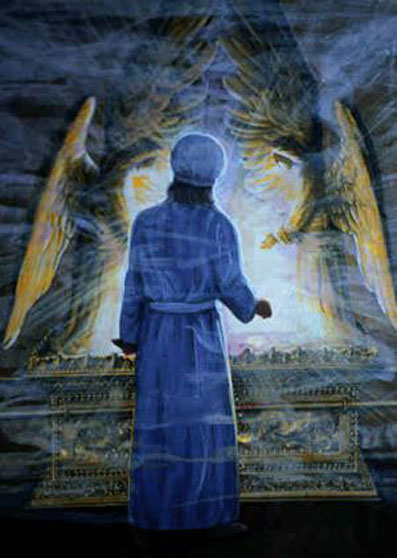Parameters of Cleansing

Bow ties are cool. Fezzes are cool. But systematic typology is very cool. Try this on…

Bow ties are cool. Fezzes are cool. But systematic typology is very cool. Try this on…

This post concerns the Covenant-literary structure of 2 Thessalonians 2. The context and audience are first century, but it amazes me how willing we modern Christians are to do intricate hermeneutical acrobatics to avoid the obvious conclusion that the particular “coming” of Christ referred to here was also a first century event – the end of the Old Covenant in AD70.
A reasonably close look at the text makes it inescapable. A very close analysis makes it inexcusable, especially once we are versed in the literary mechanics of the Bible Matrix. Continue reading
1 Peter 2:4-10 | Sermon Notes

4 As you come to him, the living Stone—rejected by humans but chosen by God and precious to him—
Peter’s use of the stone image should bring many Old Testament images to mind:
We have two types of stones: uncut stones (altar, judgment – the Law) and cut, or precious, stones (glory and riches – Grace).
Doug Wilson writes:
“As far as the Jews were concerned, the Bible teaches that because they were born into an Israelite family, circumcised in the covenant on the eighth day, they were attached to the tree. This attachment was an objective historical fact. But the sin and hypocrisy of many of them was also an objective fact, and the Lord of the Orchard consequently removed their branches, and grafted in other branches. Now the interesting thing here is that Paul turns and warns the Gentiles who had been grafted in against the very same sin committed by their fruitful predecessors” (To a Thousand Generations, p. 89).
Pastor Wilson writes that Israel is still the tree, but that the ascended Christ is Israel. I dispute the assumption that “natural branches” are still possible. The tree is now supernatural.
If you are a modern Christian and you haven’t read James B. Jordan’s Through New Eyes, you won’t appreciate all the Bible has to offer. We’ve looked at some of the meanings of the gemstones on the breastplate of the High Priest. That’s Adam. What about Eve?

‘OPEN THEISTS’ TEACH THAT GOD CANNOT KNOW THE FUTURE. He gave human beings a true free will, so if God knows the future, human beings cannot truly be free. The Old Creation (the Old Testament) and the New Creation (a new humanity beginning with Christ) were thus both gigantic g ambles on God’s part. Does God g amble? After all, He commanded His priests to “throw the d ice.”

He will set up a banner for the nations, And will assemble the outcasts of Israel, And gather together the dispersed of Judah From the four corners of the Land. Also the envy of Ephraim shall depart, And the adversaries of Judah shall be cut off; Ephraim shall not envy Judah, And Judah shall not harass Ephraim. But they shall fly down upon the shoulder of the Philistines toward the west; Together they shall plunder the people of the East; They shall lay their hand on Edom and Moab; And the people of Ammon shall obey them. The LORD will utterly destroy the tongue of the Sea of Egypt; With His mighty wind He will shake His fist over the River, And strike it in the seven streams, And make men cross over dry-shod. There will be a highway for the remnant of His people Who will be left from Assyria, As it was for Israel In the day that he came up from the land of Egypt. (Isaiah 11:12-16)
Everyone knows what “walking on water” means. You can do the impossible. Often it has a negative spin, as when it is applied to politicians with a Messiah-complex.
But what does it actually mean in the Bible? And why did Jesus do it?

There’s some weird stuff in Leviticus. It is deliberately so, forcing us to chew on it, which in turn forces us to see the world in terms of symbols, as God intended. Most of us moderns can’t be bothered with it. It’s beyond our capacity. We think such notions are childish when in fact they require an uncommon wisdom.
6. Jesus Christ was not judge of the quick and the dead, because (according to preterists) He only judged the dead.
Jesus judged between the living and the dead in AD70. The true bride and the false bride were bodies of living people. Of course, part of the true bride was the Old Covenant saints (those “under the Altar”) who were dead.